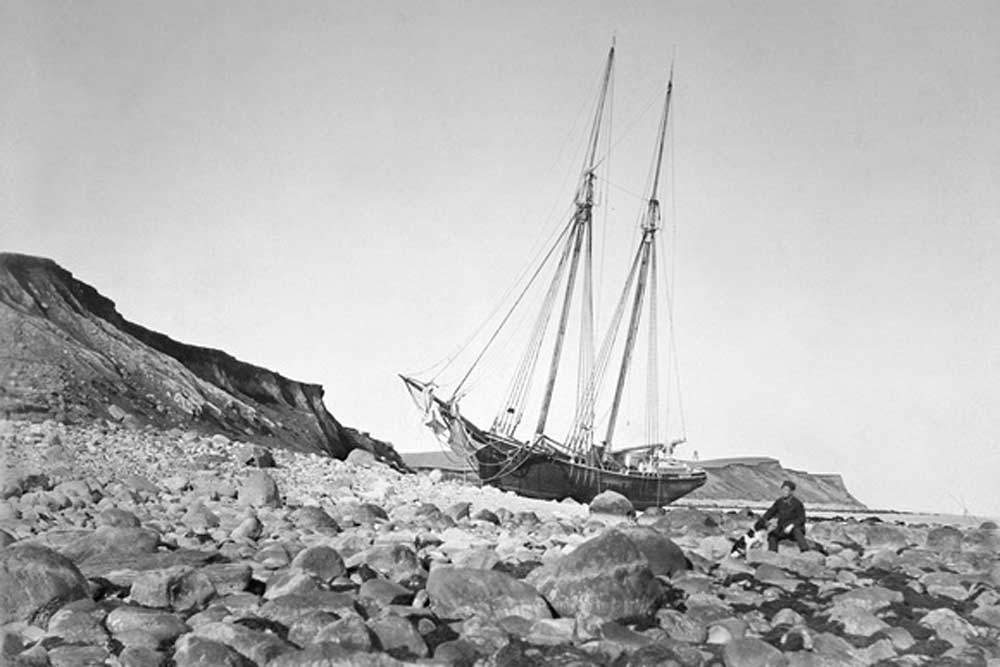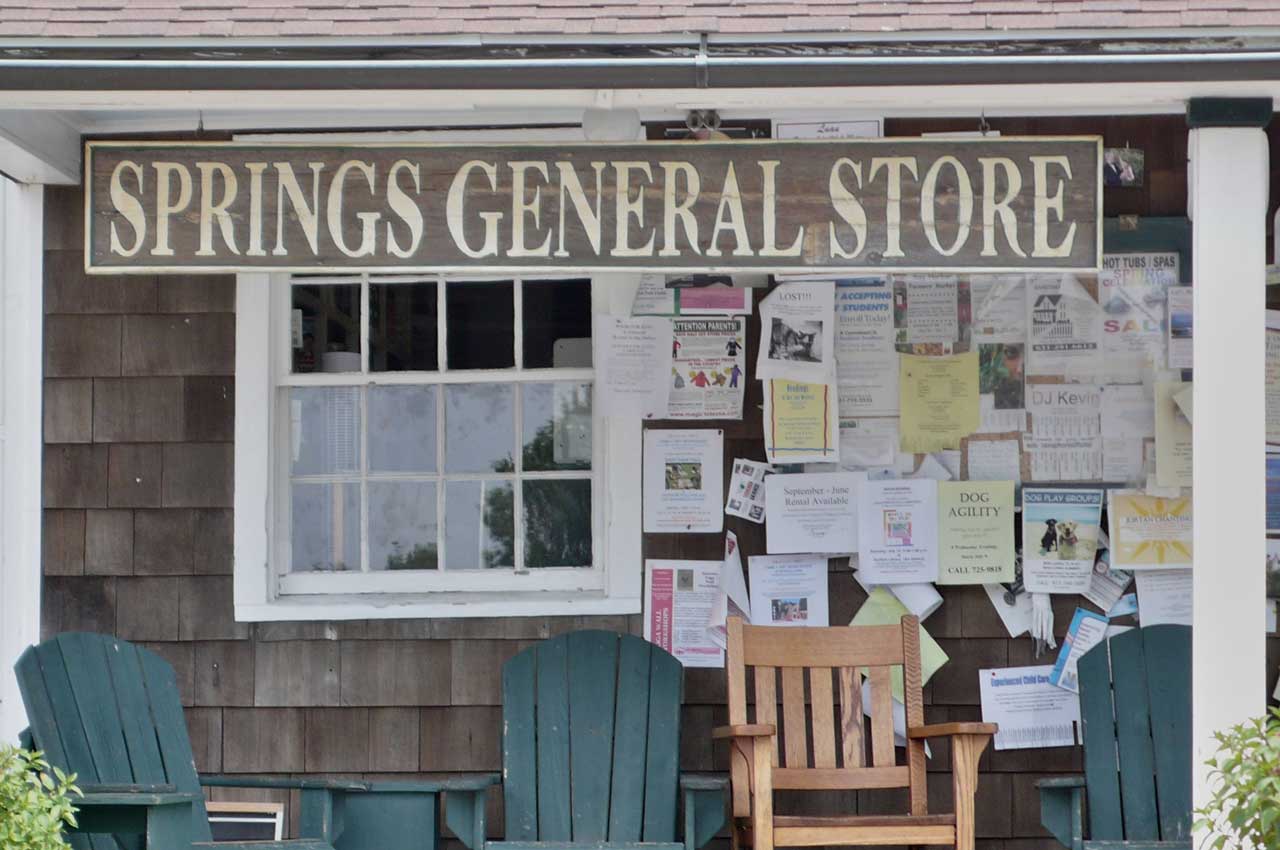
Springs General Store
Springs
Town of East Hampton - The Springs Historic District Guidelines
- The Springs Historic District contains a mix of nineteenth-century farmhouses, barns, community buildings and commercial buildings in a rural setting.
- The group of intact historic buildings, which includes 10 vernacular farmhouses, four barns, the 1844 Springs General Store, the 1882 Springs Community Presbyterian Church, the 1884 Springs School (Ashawagh Hall) and the 1886 Charles Parsons Blacksmith Shop, represent many facets of life in this thriving agrarian community during the nineteenth century.
- Equally important to the historic buildings is their setting. Although the farms are no longer active and fields are overgrown, the barns, outbuildings and maintained clearings keep the rural landscape intact. The historic setting is especially vivid at the heart of the district with the triangular green at Ashawagh Hall, the Pussy's Pond preserve and the open farmyard and agricultural buildings of the Talmage-Miller House across Fireplace Road. This open setting maintains the relationships between the farmhouses, community buildings, country store and blacksmith shop. Also preserved are the important relationships of the nineteenth-century Springs Farm between farmhouse, barn, pastureland, woodland, salt meadow and the freshwater springs of Pussy's Pond.
- The East Hampton Star: Springs - A Woodsy Place with Quiet Bay and Harbor Beaches
Springs Historical Society/ Springs LIbrary
1 Parsons Place, East Hampton 631.324.3165
- Sorry - no website - the Springs Historical Society is actively looking for a volunteer web designer!
- The East Hampton Star (2018): The Tiny Springs Library is in Peril
- 27East (2018): Springs Historical Society Sees an Infusion of Enthusiasm
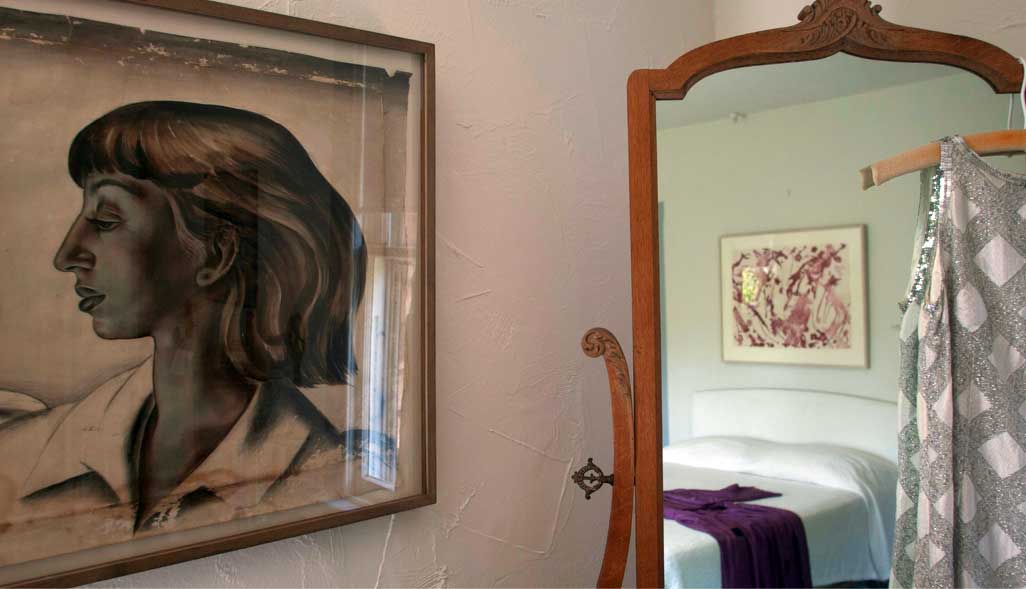
Pollock-Krasner House Detail with Portrait of Lee Krasner
Stony Brook University’s Pollock-Krasner House and Study Center
830 Springs-Fireplace Road, East Hampton 631.324.4929
- “Jackson Pollock (1912-1956) is regarded as the undisputed leader of the Abstract Expressionist movement. In 1945, Pollock married fellow artist Lee Krasner (1908-1984) and moved from New York City to Long Island’s East End. With a loan from art dealer Peggy Guggenheim, they purchased a small homestead on one and a quarter acre overlooking Accabonac Creek in The Springs, near East Hampton.”
- The Study Center - Established to promote scholarship in 20th century American art, the Study Center’s 2,000 volume art reference library focuses on modern American art and its international context, with special attention to the world-renowned eastern Long Island artists’ community. The research collections include the archives of the Pollock and Krasner, photographs by Hans Namuth, Martha Holmes, Maurice Berezov, Mark Patiky and others; and Pollock and Krasner-related documents and ephemera.
- The story is well documented, but it is really exciting to walk through the house, studio, and the area where Pollock painted and cooked, and just breathe in the inspiration.
- Guided Tours by reservation only.
- Video: The Studio Revealed
- The New York Times (2006): At Jackson Pollock’s Hamptons House, a Life in Spatters

Amagansett Historic Buildings - Sketch
Amagansett
Amagansett Historical Association
129 Main Street, Amagansett 631.267.3020
- The Amagansett Historical Association was founded in 1964, when a supermarket and parking lot were planned for the historic site. The primary purpose was to preserve the 1725 Miss Amelia Cottage. Since that time, other historic structures have been added to the 1.3 acre property.
- Miss Amelia Cottage (1725) - The Miss Amelia Cottage is open to the public as a museum, demonstrating how Amagansett people lived from the earliest Colonial times through to the beginning of the 20th century.
- The Phoebe Edwards Mulford House (Circa 1805) - The Phebe Cottage houses the Kelsey Photo Archive, a collection of about 5,000 photographic images of Amagansett people and buildings from the earliest days of photography. The archive is open to the public by appointment only.
- Richard S. Jackson Carriage House - a fine post-and-beam barn used for art exhibits and other events.
- Lester Barn (circa 1850) - The 1850 Lester Barn houses a collection of carriages, carts, and wagons that were all made or at least used in the East Hampton area. These beautiful vehicles, many of which have been fully restored, show how local families traveled from the 1800s into the 20th century.
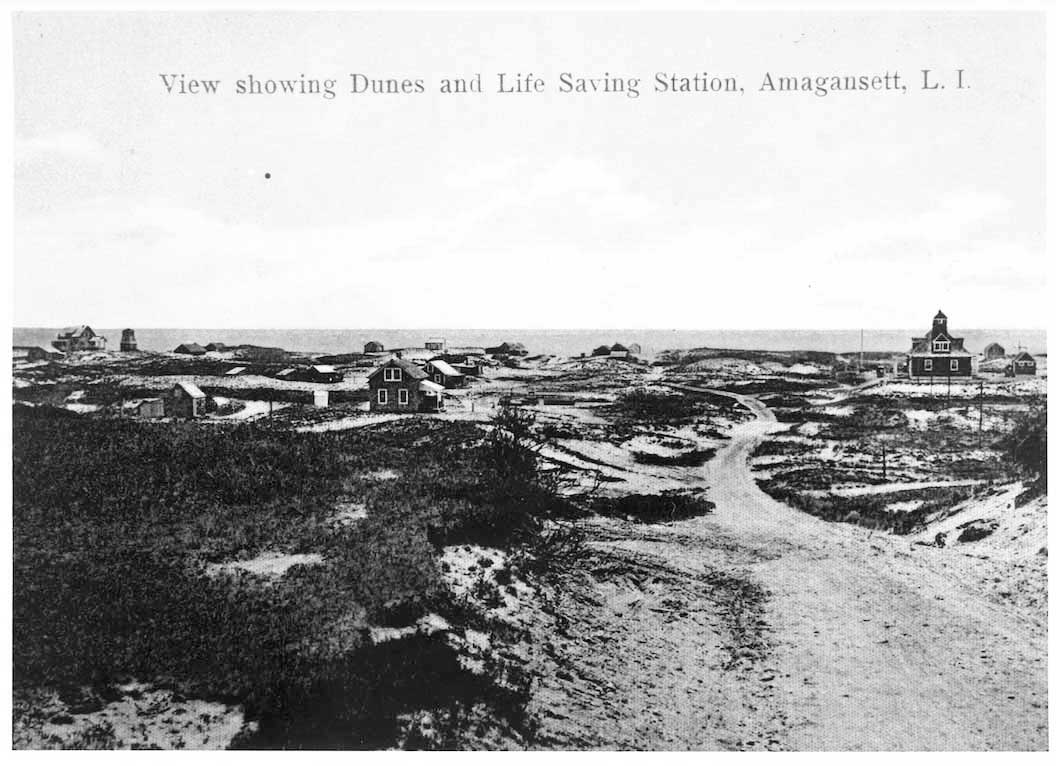
Vintage Postcard - ‘View Showing Dunes and Life Saving Station, Amagansett, L.I.’
Amagansett U.S. Lifesaving & Coast Guard Station (1902 - 1944)
160 Atlantic Avenue, Amagansett 631.527.7317
- The Amagansett Station was constructed on Atlantic Avenue in 1902, one of a network of thirty life-saving stations on the South Shore of Long Island. Every night and in bad weather the crew at these stations kept watch from the lookout tower and by patrolling the beach. Discovering a ship in distress, the life-savers would perform a rescue by launching their surfboat or by firing a line to the ship and taking people off with a breeches buoy. From 1902 to 1937 the crew of the Amagansett Life-Saving Station, most of whom were experienced local fishermen and shore whalers, kept watch over this beach and rescued sailors and passengers from a number of shipwrecks.
- During World War II, coastguardsman John Cullen had just begun a beach patrol from this station early in the morning of June 13, 1942, when he encountered four Nazi agents who had landed from a U-boat. Cullen returned to the Amagansett Station to report the incident. Later in the morning, Chief Boatswain’s Mate Warren Barnes brought in four boxes of explosives, which his men had found buried in the sand. After one of the would-be saboteurs turned himself in to the F.B.I., the others were apprehended and tried. This Amagansett incident led to the establishment, only a month later, of the Coast Guard Beach Patrol, which grew to consist of 24,000 men and was an important component of coastal defense during the war.
- History.com (2017): When the Nazis Invaded the Hamptons
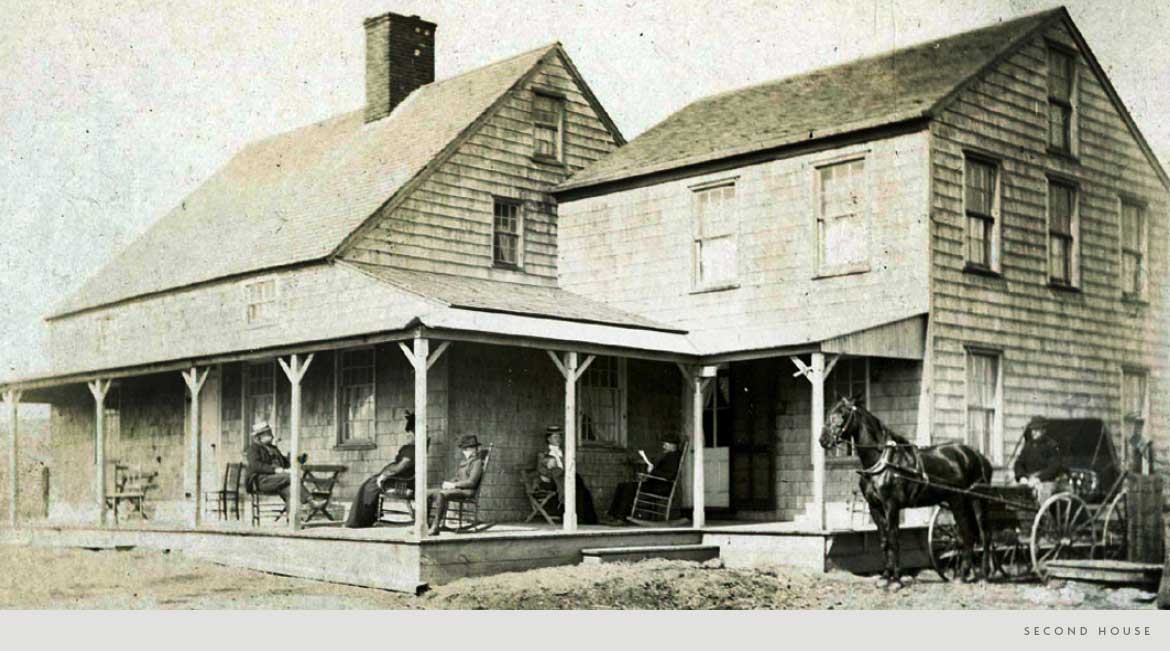
Montauk NY Second House - Historic Photo
Montauk
Check out our Blog on Montauk from May 2018 . . .
Montauk Historical Society (This is a great website!)
12 Second House Road, on Fort Pond, Montauk 631.668.2544
- Second House Museum (1746) - Second House is the oldest remaining structure in Montauk which at that time was used solely as pastureland for the farmers of East Hampton. Second House was one of three structures built to house the ‘keepers’ of the cattle and sheep.
- Curbed Hamptons (2019) The oldest house in Montauk, Second House, is getting restored
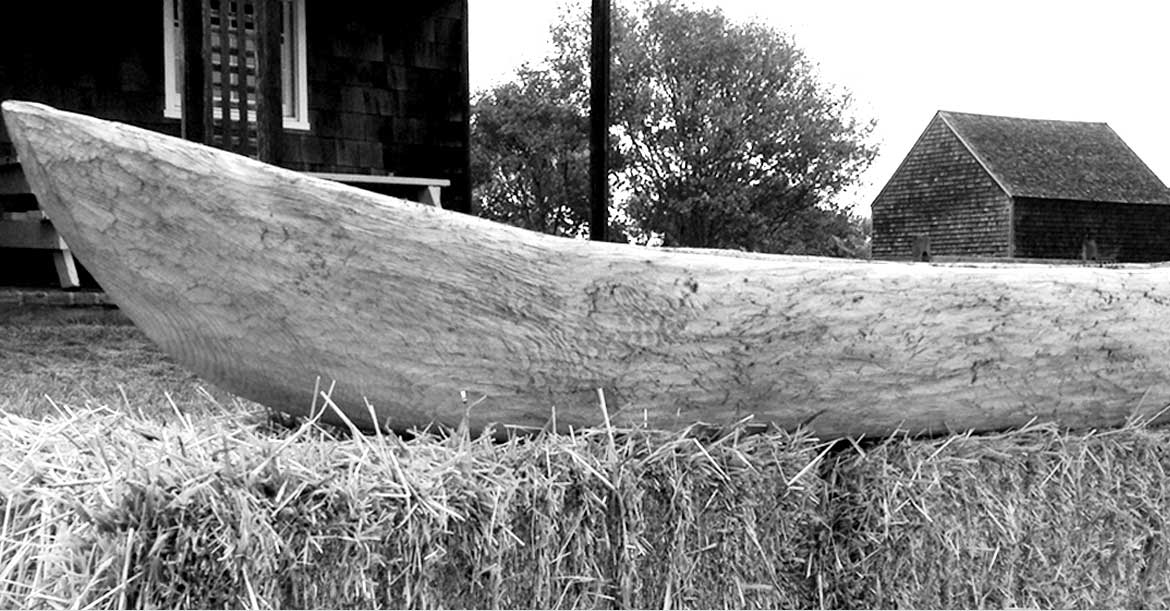
Montauk Indian Museum - Hand Dug Out Canoe
- The Montauk Indian Museum - On the grounds of Second House, this museum was created to preserve and present to the public the history of the original inhabitants of the land through the Paleo, Archaic, Woodland, and Contact Periods. The museum is a treasure trove, filled with pottery, charm stones, crystals, a pipe made out of wampum, deerskin moccasins, wooden cups that doubled as diggers, pestles used to crush corn and medicinal herbs, axes and tools used to make projectile points including spear points and arrowheads.
- 27East (2017): Montauk Indian Museum is Open to the Public
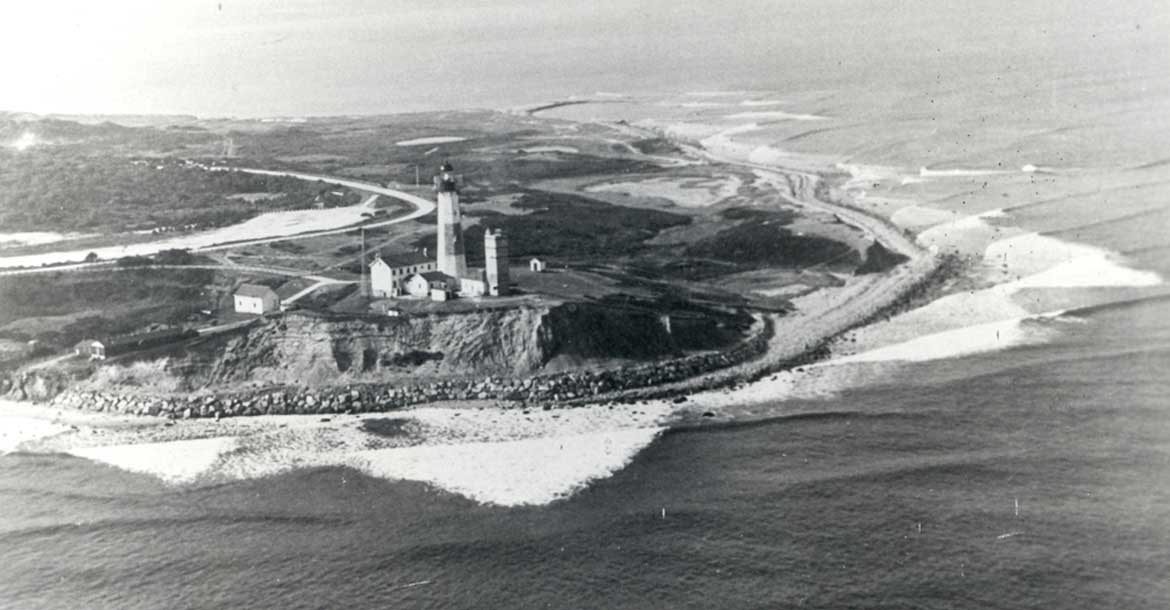
Montauk Lighthouse Aerial View Circa 1946
- The Montauk Lighthouse - The first lighthouse in New York State, the Montauk Lighthouse was authorized by the Second Congress in 1792, under President George Washington. Construction was completed in 1796. The United States Coast Guard operates the light, but the Montauk Historical Society maintains the lighthouse, keeper’s dwelling, outbuildings, and grounds. There’s an excellent museum in the keeper’s dwelling. On display are reproductions of Coast Guard Vessels and a 3D map of East Coast Lighthouses. Visitors are welcome to climb the 137 spiral steps to the top of the lighthouse and, on a clear day, look out at Block Island across the sound. If it’s foggy, listen for the songs of ancient shipwrecks in the wind . . .
- The New York Times (2018): After 30 Years, She’s Turning In Her Keys to the Montauk Lighthouse
- Montauk Oceans Institute - This museum - located in the Lighthouse Museum complex, contains exhibits regarding ecology and surf culture. It will serve to educate the public in the areas of marine science, oceanography and physical science, as well as the part surfing played in the history of the Montauk region.
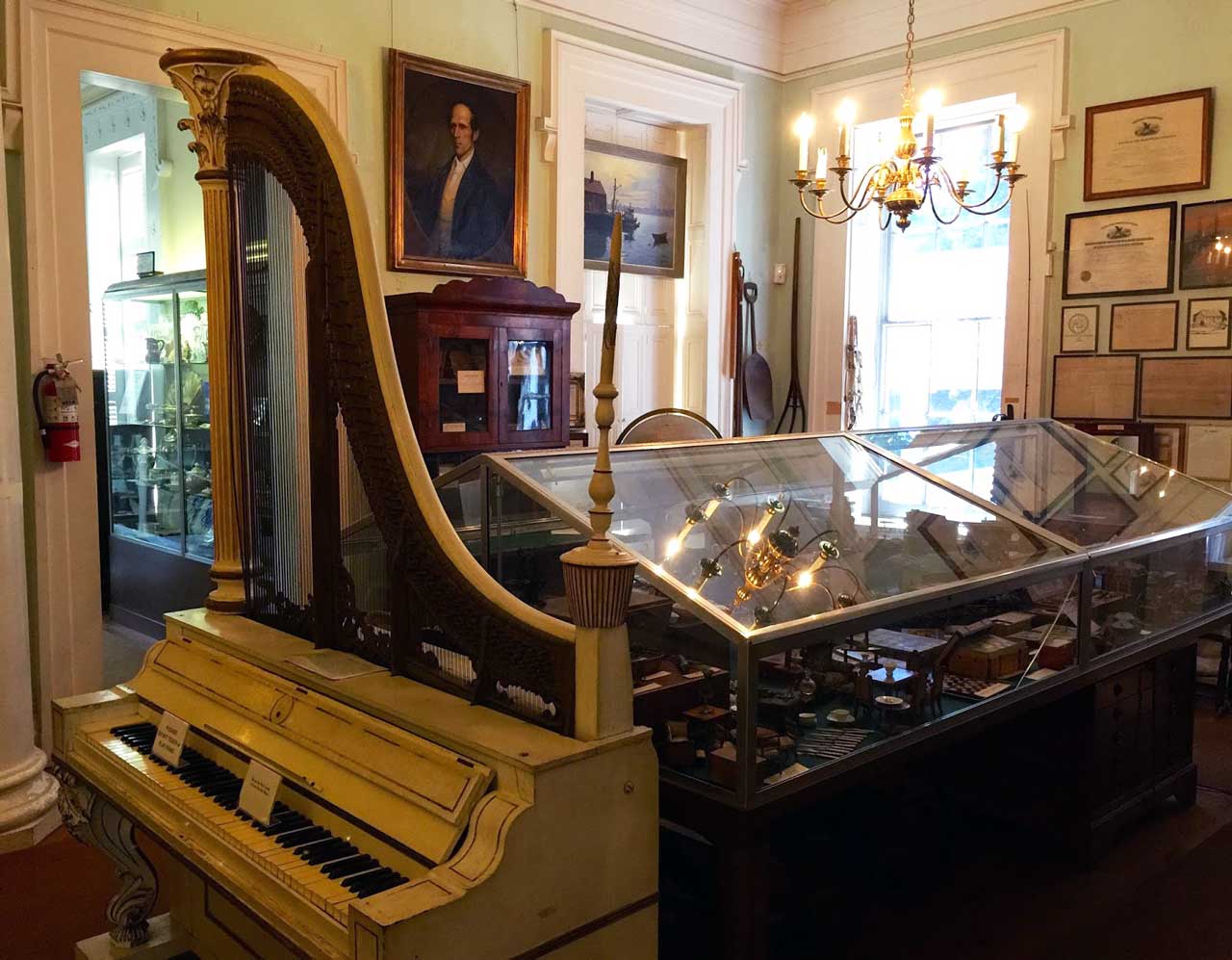
Sag Harbor Whaling and Historical Museum - Exhibit
Sag Harbor
Sag Harbor Whaling & Historical Museum
200 Main Street. Sag Harbor 631.725.0770
- The mission of the museum is to preserve, interpret and promote the culture of Sag Harbor through its collection of historical objects related to the village’s whaling history, as well as the presentation of contemporary exhibits and events that reflect the culture of the village today and put Sag Harbor’s past and present into context. The Museum is a certified National Treasure and is listed on the National Register of Historic Places.
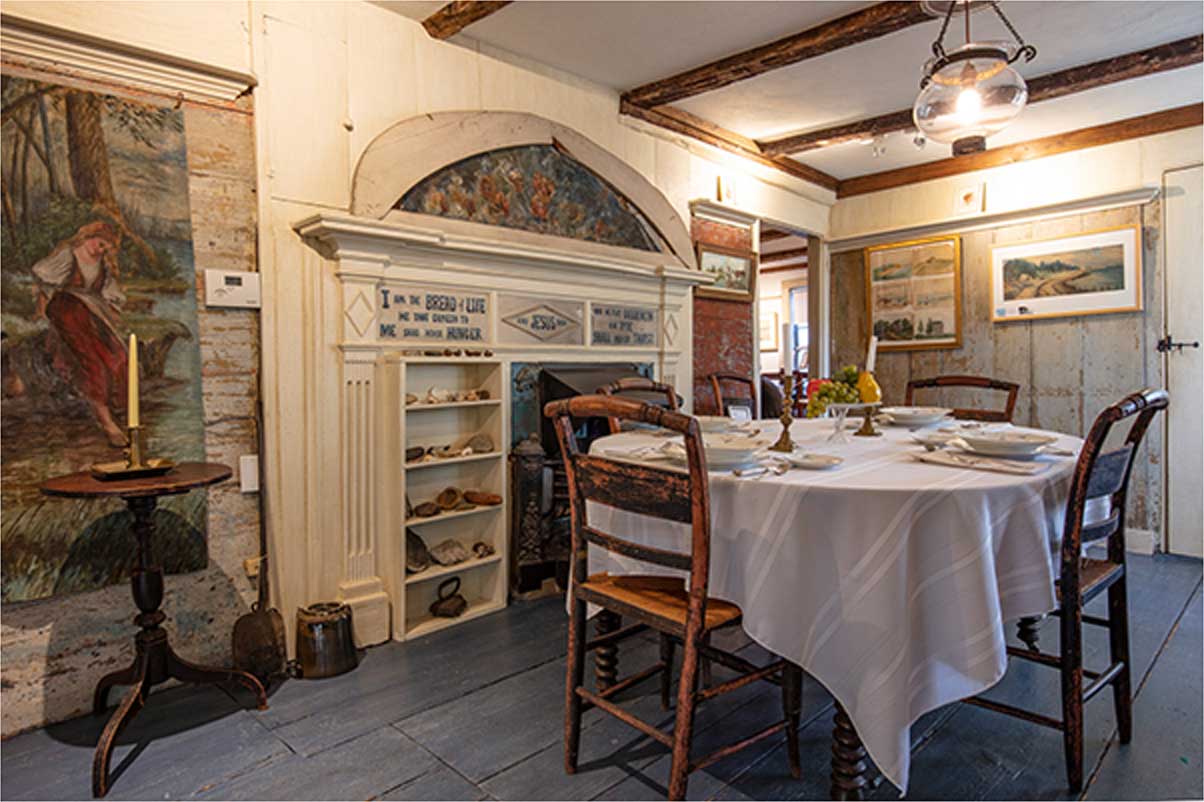
Sag Harbor Historical Society - Annie Cooper Boyd Museum - Interior Detail
Sag Harbor Historical Society
174 Main Street, Sag Harbor 631.725.5092
- Housed in an 18th century Sag Harbor home, the museum puts on yearly summer historic exhibits, holds lectures, and is open on the weekends for public tour. In the rear of the property is the Society’s interpretation of William Cooper’s whale boat shop, containing an excellent small exhibit of boat building tools and videos about Sag Harbor’s famous whaling industry. Another historical property open to public viewership is the 1916 jail house located on the premises of the Sag Harbor Police Headquarters. Private tours of the jail are available upon request.
- Annie Cooper Boyd Museum - Annie Cooper Boyd was a local artist, diarist, and important primary source for understanding the history of Sag Harbor. Born in 1864, she grew up next door to the Historical Society’s museum on Main Street. As a teenager, and through adulthood, Annie documented the architecture and natural beauty of the East End through her drawings, paintings, and diary. She even painted several doors in the museum with iconic local landmarks. Through her art and writings, visitors are able to envision what the village and environs looked like in the late 1800's.
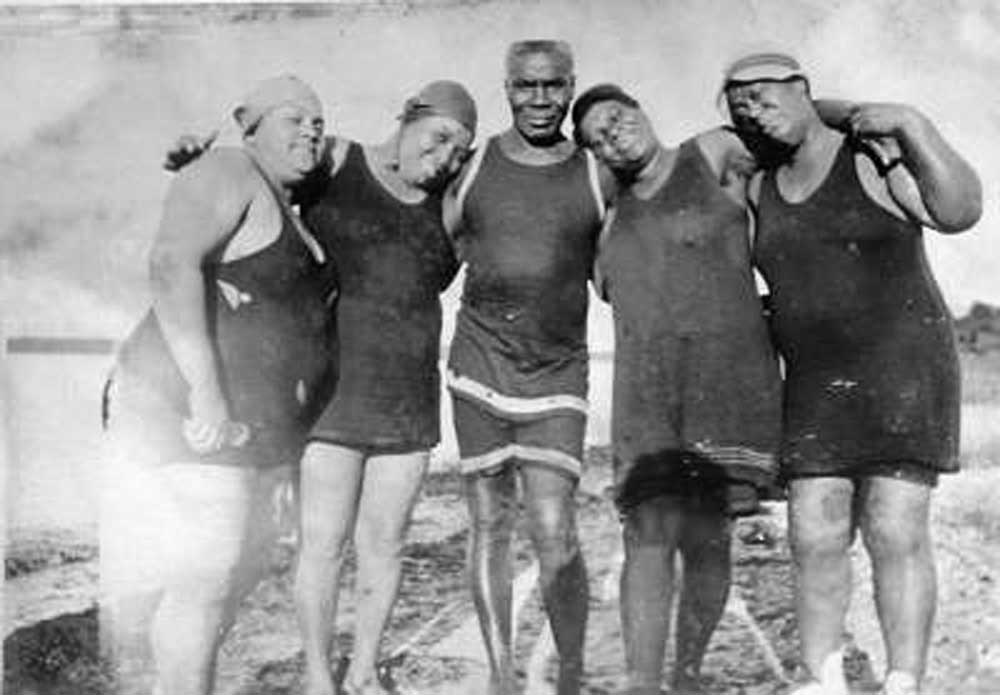
Johnson Family at the Beach (Circa 1930s ?) From the Collection of the Eastville Community Historical Society
Eastville Community Historical Society
139 Hampton Street, Sag Harbor 631.725.4711
- From the early 1800's until the mid 1900's, the section of historic Sag Harbor known as Eastville was home to a multi-ethnic population of free Blacks, European immigrants and Native Americans. The area evolved through many economic changes, including two devastating village fires, the rise and fall of the whaling industry, the development and decline of factories, and a boom in the tourist and resort business. Today Eastville retains its ethnic mix, while preserving its modest character amidst the glamour and wealth of the Hamptons.
- The Eastville Community Historical Society was founded in 1981 and chartered by New York State in 1986 to preserve the history of the working-class community of Eastville and to tell the story of St. David AME Zion Church. The church remains in its original location, built in 1839 by African Americans and Native Americans on Eastville Avenue. It is widely believed to have been a stop along the Underground Railroad. Its founding Pastor, Rev. P. Thompson, was a noted Abolitionist and friend of Frederick Douglas. The Society also owns, upkeeps, preserves and protects the adjacent century-old cemetery in which African and Native Americans of the earlier St. David's church membership are buried, many of whom were Sag Harbor Whalers.
- The East Hampton Star (2016): Sag Harbor’s Contributions to the Nation’s Newest Museum
- 27East (2014): Historical Society Sets Out To Uncover Sag Harbor's Involvement With The Underground Railroad
And if you still can’t get enough of Hamptons’ History, here are some amusing articles from Dan’s Papers:
